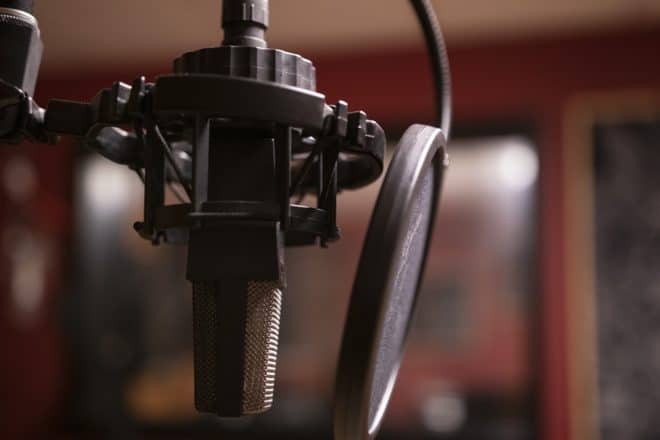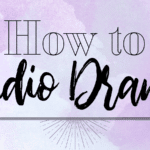8 Things I’ve Learned While Producing Two Podcasts

The number of podcasts are growing at an exponential rate. What’s more is that the number of individuals that listen to podcasts is growing at an even faster rate.
We have an insatiable appetite for audio and there is plenty of opportunity to innovate on the medium. That’s what I’m hoping to do with the two podcasts I’ve helped launch in the last year.
I hadn’t planned on getting into podcasting as I prefer writing copy. But my marketing skills and clientele have pushed me into the space and I’m glad to have had a taste of what it takes to produce a podcast.
What follows is a list of things I’ve learned while wearing the hat of sound engineer, producer, writer and promoter for these two podcasts. There are far wiser and more skilled podcast creators throughout the internet, but my wish is to impart some thoughts to those brave individuals just getting started.
It’s a wild ride, but you should start today!
For your first ten episodes, sound quality DOES NOT matter.
Like any sort of audience building, authenticity is the number one reason people will gravitate to your brand and stick around for years to come. This means that if you’re building an audience from scratch, your earliest listeners will be perfectly fine with a few technical slip-ups or quality control issues.
In fact, they’ll love you even more for it. They’ll be receiving a “behind the scenes look” into what it takes to run your show. Some may even offer to help!
Of course, if you have an existing following from a blog, email list, or social media, this audience may know you already.
But even if you’re bringing 10,000 listeners to episode #1, I’d still recommend you disregard the audio quality.
What matters most in the early episodes is the quality and consistency of the content. The topic choices, story framing, interview guest, host/guest cohesion and banter, etc… will entice people to subscribe. And your episode cadence will keep them coming back at a consistent rate.
Not convinced? An industry survey notes that only half of podcast listeners care about the sound quality. As long as the content is good, “amateur quality” does not matter enough early on.
So focus on content first!
But if you really are worried about quality, just follow some simple guidelines like experiment with microphone placement and record in a quiet room with plenty of space around you.
Everyone says they’ll listen, but your numbers will prove otherwise.
One of the podcasts I produce, the host talked about launching it for over a year! She talked to everyone she knew. Friends, family, coworkers, restaurant servers….really anyone who brought up podcasts in conversation.
The validation of her podcast idea from everyone she knew was a drug, similar to the social validation we receive from likes on Facebook and Instagram.
But when she finally released Episode #1, and Episode #2, #3, #4, #5… the analytics didn’t support her assumptions.
What we found is that releasing a podcast is like launching a startup. Product market fit only occurs when people are willing to throw their hard earned money at you for your product or service. For podcasts, it’s listeners and subscribers of course, but I think you get the metaphor.
Take time to consider who your audience is and how you can make your podcast so good that listeners are begging for more!
Everyone thinks they can talk until they’ve listened to their first recording.
Could you sit in a room alone and talk for 10 minutes straight? I think many people believe they have the “gift of gab”, but when push comes to shove, they clam up.
Put a microphone in their face and they’re sweating bullets immediately.
Now interviews are certainly different, but I’d argue interviews are even harder to get right. Asking the right question, at the right time, takes practice.
If you’re thinking of starting a podcast, first try recording yourself talking about a topic you’re an expert on. It doesn’t have to be the topic your future podcast will be on. We just want to lower the bar to start and see what you sound like while talking about something you’re good at or interested in.
If you want to do interview style podcasts, invite a friend to do a trial interview on any topic he or she is willing to talk about.
Then listen back to your recording.
You’ll be surprised by how you sound, the pauses, crutch words, missed opportunities for follow up questions and more!
You may think “practice makes perfect” and your first 10 episodes will be trial by fire. But the saying should actually be “perfect practice makes perfect”.
Structure is important, but shouldn’t be rigid.
Many podcasts use similar structures. It should be quite familiar actually.
Intro music comes in and fades out with the sound of the host’s voice. An overview of today’s episode with a brief message from a sponsor. The host introduces a guest or begins talking about the topic he or she teased already. A sponsored ad interrupts the story or interview right before the good part. The episode is wrapped up nicely but not before another word from a sponsor.
Yes, I’m drastically oversimplifying and disregarding many of the more creative podcasts but my point is that structure is an important part of producing a great show.
You should look at ways to play with that structure to suit your topic/audience. Vary the structures you use in different episodes.
The rigidity is great for some podcasts when the audience is narrow and they “want what they want when they want it”, but chances are you have more creativity in you. Don’t settle on the same old format everyone else is doing.
Oh and don’t forget about the overarching structure of a good story. You probably learned about this in high school english, but it’s worth revisiting.
Email is greater than social.
You may have heard this from other marketing professionals but it’s worth repeating over and over.
The single most useful resource to build for any creator is an email list. Why, you ask? Well, barring a massive disruption of how businesses and people communicate, email isn’t going anywhere anytime soon.
Your social following on Myspace…disrupted by Facebook. Your social following on Facebook…disrupted by Instagram. Your social following on Instagram…is currently being disrupted by TikTok.
So, all the time you spend on building a social following will immediately go to waste when the next trending platform is released.
Your email list on the other hand is portable, can be purged to increase the quality of your list, and you won’t be beholden to updated social media algorithms.
If you’re starting with no audience at all, rest assured your email list of friends, family and coworkers will be a good place to start. Send a personal message to each email in your contact list asking if they would mind if you put them on your podcast email list. 90% will say yes and now you have a core list to launch your podcast with!
Go where your audience is.
You should already have an idea of where your future audience congregates on the web.
If not, then reconsider whether a podcast on that topic is right for you.
Make a list of all the industry blogs, news sites, forums, reddit threads, email lists, Twitter accounts, Facebook groups, industry meetups, and conferences. Also, don’t forget the other podcasts and podcast host social accounts.
This is your hit list for at least three months leading up to the launch of your podcast and continuously as you release episodes. You should be commenting on tweets, posting in threads, sharing insight, cracking jokes, even making “enemies” if the genre can tolerate drama.
By the time you launch Episode #1, you’ll have laid the groundwork for at least a small audience. Plus, each time you mention a website, thread, or person on your podcast, you now have a reason to send that episode directly to them. Whether they care, listen, share it on their social properties or website is up to them, but the important thing is they’re beginning to recognize you as a voice in the space.
Be funny, approachable, willing to share thoughts and advice, and of course…AUTHENTIC.
Take advantage of new platforms and early technology.
Although podcasting has been around for quite some time, there is still plenty of opportunity for the market to mature and innovate. The number of podcasts and listeners continues to rise and new production technology, formats, distribution & discovery platforms, and ways to monetize audio content is going to become even more competitive.
It’s really a prime opportunity for audio creators to capitalize on new platforms and technology, betting on multiple as an early adopter in the hope of riding the wave of success.
List your podcast anywhere and everywhere to make it easy to be found. Ask your audience and podcasting tastemakers like DiscoverPods.com and Vurbl.com to review your creative work. Promote your podcast or personality on young social channels. You’ll be rewarded over time with occasional bumps in audience growth or even massive spikes of downloads.
Promote others before promoting yourself.
Invite people onto your podcast. They’ll be delighted to join you and offer their expertise. They’ll do the promoting for you and help establish a base of listeners that you can call your own.
If your podcast isn’t an interview format, then simply talk about other people and their work during your episodes. Send the episode to them via email and tag them in social posts. They’ll be thrilled that someone is talking about them and still do the promotion of your work for you.
Once you’ve made a name for yourself as an interviewer, or someone that quotes/references other professionals in their work, it’s more likely that you’ll be invited to join other podcasts or your work will be referenced elsewhere.
The norm of reciprocity is a powerful tool in your arsenal, so don’t neglect it.
To wrap things up, I’d simply recommend taking the leap. Audio is a fantastic format with plenty of frontier to discover, innovate and find growth opportunities. The boundless amount of creativity available to audio creators is exhilarating too!
Find your niche, make mistakes and keep publishing!













Comments
Comments are closed.